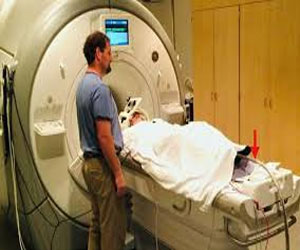- Home
- Editorial
- News
- Practice Guidelines
- Anesthesiology Guidelines
- Cancer Guidelines
- Cardiac Sciences Guidelines
- Critical Care Guidelines
- Dentistry Guidelines
- Dermatology Guidelines
- Diabetes and Endo Guidelines
- Diagnostics Guidelines
- ENT Guidelines
- Featured Practice Guidelines
- Gastroenterology Guidelines
- Geriatrics Guidelines
- Medicine Guidelines
- Nephrology Guidelines
- Neurosciences Guidelines
- Obs and Gynae Guidelines
- Ophthalmology Guidelines
- Orthopaedics Guidelines
- Paediatrics Guidelines
- Psychiatry Guidelines
- Pulmonology Guidelines
- Radiology Guidelines
- Surgery Guidelines
- Urology Guidelines
Vagus Nerve stimulation may ease Pain associated with PTSD

Post-traumatic stress disorder, or PTSD, is a mental condition caused by a traumatic event. People with PTSD may experience intrusive memories, negative thoughts, anxiety and chronic pain. The condition is typically treated with a combination of psychotherapy, anti-depressants and anti-anxiety medications. The study has been published in PLOS ONE,
Vagus nerve stimulation is a form of neuromodulation, an approach to pain management that also includes spinal cord and dorsal root ganglion (DRG) stimulation.
Imanuel Lerman at University of California San Diego School of Medicine, Jacobs School of Engineering and Qualcomm Institute wanted to know how the emotional pain experience may be influenced by the vagus nerve, which runs down both sides of our necks from the brainstem to the abdomen. The vagus nerve also plays a critical role in maintaining heart rate, breathing rate, digestive tract movement and many other basic body functions.
“It’s thought that people with certain differences in how their bodies — their autonomic and sympathetic nervous systems — process pain may be more susceptible to PTSD,” Lerman said. “And so we wanted to know if we might be able to re-write this ‘mis-firing’ as a means to manage pain, especially for people with PTSD.” Lerman led the study with Alan N. Simmons, PhD, director of the fMRI Research Laboratory at Veterans Affairs San Diego Healthcare System and associate professor of psychiatry at UC San Diego School of Medicine.
The team used functional magnetic resonance imaging (fMRI) to get a look at the brains of 30 healthy study participants after a painful heat stimulus was applied to their legs. To determine how the body’s sympathetic nervous system responds to pain, they also measured the sweat on the skin of participants before the heat was applied, and at several points as the heat increased.
Half the participants were treated with noninvasive vagus nerve stimulation for two minutes — via electrodes placed on the neck — approximately 10 minutes before the heat stimulus. The other half received a mock stimulation.
Lerman and colleagues report three main findings from this study. First, vagus nerve stimulation blunted peak response to heat stimulus in several areas of the brain known to be important for sensory and discriminative pain processing, as well as in emotional pain centers. The treatment also delayed the pain response in these brain regions — pain-related brain regions were activated ten seconds later in participants pre-treated with vagus nerve stimulation than in sham-treated participants.
Second, the sweat measurements revealed that vagus nerve stimulation altered autonomic responses to painful heat stimulus. For participants pre-treated with vagus nerve stimulation, the sweat response decreased over time, in contrast to the sham-treatment group.
Third, vagus nerve stimulation dampened the usual brainstem centers critical for the fight-or-flight-type responses, which are also known to control the sweat response to pain.
“Not everyone is the same — some people may need more vagus nerve stimulation than others to achieve the same outcomes and the necessary frequencies might change over time — so we’ll need to personalize this approach,” Lerman said. “But we are hopeful and looking forward to the next steps in moving this approach toward the clinic.”
Next, Lerman and colleagues will launch a Veterans Affairs Healthcare System-funded clinical trial in San Diego with military veterans, with and without PTSD. They want to determine if at-home vagus nerve stimulation can reduce emotional pain and underlying neural inflammation associated with PTSD. To learn how to participate, please call 858-552-8585 or email achiu@vapop.ucsd.edu
The U.S. Food and Drug Administration (FDA) has approved noninvasive vagus nerve stimulator for the treatment of episodic and chronic cluster headache and acute migraine, as well as an implantable device for epilepsy. An implanted vagus nerve stimulator is now being tested in a clinical trial for the treatment of rheumatoid arthritis. Side effects of implanted vagus nerve stimulation can include hoarseness, shortness of breath and nausea.
For more details click on the link: https://doi.org/10.1371/journal.pone.0201212

Disclaimer: This site is primarily intended for healthcare professionals. Any content/information on this website does not replace the advice of medical and/or health professionals and should not be construed as medical/diagnostic advice/endorsement or prescription. Use of this site is subject to our terms of use, privacy policy, advertisement policy. © 2020 Minerva Medical Treatment Pvt Ltd